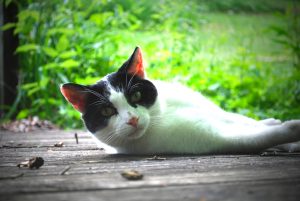Surgery
We perform a variety of different surgeries from routine spays and neuters to complex and life threatening surgical emergencies. Goodworks offers in-house pre-anesthetic blood screening for the utmost in safety and this blood screening is recommended for all patients undergoing anesthesia. Check out our Lab Services to see how we can help your pet! This blood screening ensures that your pet is healthy enough to receive anesthetics by checking parameters related to kidney and liver function. It also checks values related to blood cells. The anesthetics administered are specifically tailored to your pet and depend upon your pet’s health status and procedure(s) to be performed.
We have state of the art equipment for monitoring your pet during surgery. We monitor your pet's heart rate & rhythm, oxygen saturation, respiration, temperature, and blood pressure. More important than the equipment, however, is active monitoring by trained personnel. Goodworks employs highly skilled registered veterinary technicians that will ensure all surgical patients are closely monitored and given intensive care through anesthesia and the recovery phase.
 Furthermore, intravenous (IV) fluid therapy is standard for all patients during surgery. Providing IV fluids while under anesthesia allows us to intervene quickly and immediately if a pet has any anesthetic abnormalities such as a dangerous drop in blood pressure or heart rate. The fluid rate can be adjusted as necessary and emergency drugs can be administered without having to place an IV catheter under an emergency situation. In addition to fluid therapy, each patient will be placed on a warm water bed during surgery to help maintain core body temperature. This improves circulation and aids in the speed of recovery from anesthesia.
Furthermore, intravenous (IV) fluid therapy is standard for all patients during surgery. Providing IV fluids while under anesthesia allows us to intervene quickly and immediately if a pet has any anesthetic abnormalities such as a dangerous drop in blood pressure or heart rate. The fluid rate can be adjusted as necessary and emergency drugs can be administered without having to place an IV catheter under an emergency situation. In addition to fluid therapy, each patient will be placed on a warm water bed during surgery to help maintain core body temperature. This improves circulation and aids in the speed of recovery from anesthesia.
We strive to remain at the forefront of the veterinary medical field and to provide your pet with the highest quality medical care.
